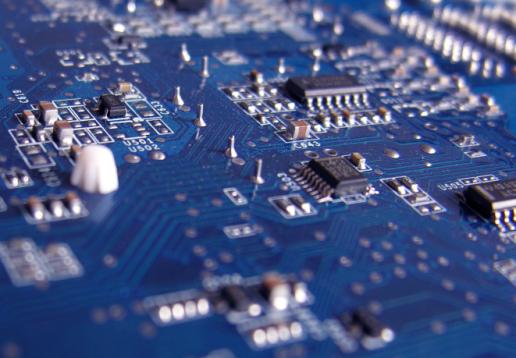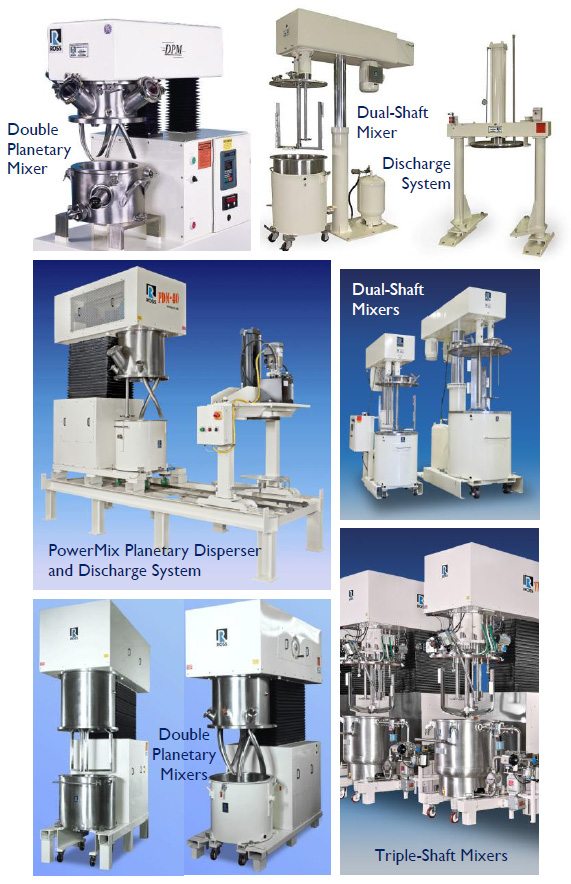Tech Report
Recommended Mixing Equipment for Encapsulation Materials

Application Summary
The majority of encapsulation materials utilized in electronic packages are highly-filled epoxy and hardener resin systems.
Whether supplied as low-melting solid preforms used in transfer molding machines or as liquid encapsulants applied via automated needle dispensers, these epoxy compounds share a similar composition which requires thorough mixing under vacuum conditions and controlled temperatures.
Proper mixing is critical to achieving consistent dispersion quality, viscosity, void-free consistency and stability - all properties that directly affect encapsulation performance.
Ross Multi-Shaft Mixers and Planetary Mixers
Ross Multi-Shaft Mixers are widely used in the preparation of filled epoxies including protective encapsulation materials for transistors, capacitors, memory devices and other electronic packages. Equipped with two or more independently-driven agitators working in tandem, Multi-Shaft Mixers deliver a robust combination of high shear agitation and laminar bulk flow within a wide viscosity range: from water-like to several hundred thousand centipoise.
The most economical design is the Dual-Shaft Mixer which features a low-speed anchor and a high-speed saw-tooth disperser blade. A typical mixing procedure starts with blending the epoxy and hardener liquid resins, along with an antioxidant, under vacuum. Other minor liquids are then mixed into the resin blend, followed by solid fillers (predominantly fused silica), colorants, flame retardants, scavengers and other additives. Between each solids addition, vacuum is carefully reestablished to prevent the formation of micronized air within the batch. The final addition is the catalyst at which point it is very critical for the product to stay well under the curing temperature to ensure maximum storage stability. The mix vessel is then rolled over to a Discharge System for fast and efficient product transfer with minimal waste and clean-up.
Epoxy molding compounds that undergo very high viscosity peaks (above 1 million cP) are better prepared in Planetary Dispersers and Double Planetary Mixers. Planetary-style mixers consist of two or more blades which rotate on their respective axes as they revolve around the mix vessel. The agitators continually advance into the batch and contact fresh product all the time.
Combining slow-speed planetary agitation with an orbiting high-speed disperser, the Ross PowerMix Planetary Disperser quickly incorporates large amounts of solids into a very thick starting liquid. Each agitator is independently controlled so flow patterns and shear rates are easily fine-tuned with every change in product rheology.
The classic Double Planetary Mixer, on the other hand, is particularly ideal for formulations which start out with the melting of solids or highly viscous pastes. The agitation mechanism is extremely thorough and does not require a minimum liquid level to properly wet-out and disperse solids. Moving at relatively low speeds, the identical planetary stirrers impart increasing levels of shear as the batch gains considerable viscosity. A typical processing method in the Double Planetary Mixer is mostly high viscosity mixing with a let-down step towards the end of the cycle. Testing is recommended to confirm the best mixing strategy and equipment for a particular filled epoxy formulation.
Other applications ofRoss Multi-Shaft Mixersand Planetary Mixers:
- Battery Slurries
- Ceramic Dispersions
- Conductive Inks
- Cosmetic Creams
- Electrode Materials
- Engineered Composites
- Fuel Cell Pastes
- Hot-Melt Adhesives
- Lubricants
- Medical Gels
- Pharmaceutical Pastes
- Plastisols
- Polyurethanes
- RTV Sealants
- Silicone Compounds
- Solder Pastes
- Specialty Coatings
- Syntactic Foams
- Thermal Greases
